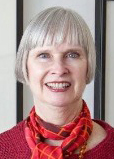While most historical scholars are interested in the content of books, students at the California Rare Book School judge the book by its cover.
By meticulously examining a book’s leather binding and paper type, they can tease out information about the era in which the book was made.
Since 2005, the California Rare Book School has been offering summer courses that put students in direct contact with rare books that have historical significance.
The school is a project of the Graduate School of Education and Information Studies at UCLA, and its courses are open to anyone who is interested in the subject matter and wants to apply, said Susan Allen, the school’s newly appointed director.
Ancient books are not the school’s only focus. For Claire Kennedy, a graduate student in library and information studies, the link between 500-year-old books and modern artists’ books was a memorable moment in her rare book studies.
“Though rare book studies deals with a lot of old books, there is this whole collection of artists’ books that are contemporary and are being made today, that, in the future, will be objects of study,” Kennedy said. Since 2008, Kennedy has taken two courses at the rare book school.
Each class enrolls a maximum of 12 people, who are selected by the instructor. Courses cost about $1,000 each, although there are scholarships available, Allen said.
Classes in the school run for one-week periods over the summertime with 40 hours of class in that weeklong period. Most classes are held on campus, due mainly to UCLA libraries’ extensive special collection of books, Allen said.
For students and professors alike, these collections are what make the learning process hands-on.
“There are no slides, no pictures,” said Johanna Drucker, who teaches history of printing at the Rare Book School and is a professor of bibliography at UCLA. “We actually take people to the collections.”
In her historical bibliography class, Kennedy learned cataloguing techniques and identified eras based on the binding of books. Calfskin bindings, for example, would likely be from the 17th century.
“We treat books as historical artifacts,” Kennedy said. “The content isn’t as important as what the object tells you about the period of time in which the book was made. In a way, it’s almost like archaeology.”
The school offers classes, such as rare book cataloguing, that are not offered anywhere else on campus, Kennedy said.
UCLA libraries’ special collections contain rare books that are available for all students to look at. Allen, who used to be the head of the Charles E. Young Research Library’s Department of Special Collections, said that was another positive to having the classes on campus.
Aside from the academic and professional skills students can gain, the classes are also great for networking, Drucker said. Because these continuing education courses are open to anyone, many professionals, art collectors and scholars also enroll.
“It’s the equivalent of business schools when they bring in executives for leadership and management skills,” Drucker said. “Students here get to meet people at their own level.”
Though the courses mostly focus on old books, Drucker said she does not want people to get the sense that the rare book school is esoteric and old-fashioned.
“The transition from historical to modern is becoming more and more important,” she said. “We are interested in addressing concerns that come from the digital environment, like (digitally curating) … rare book materials. We want to be a part of the emerging environment with a nod toward the future.”
